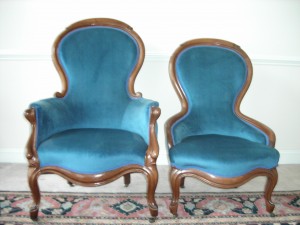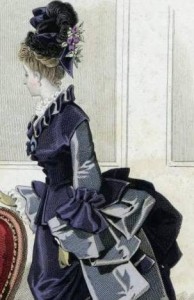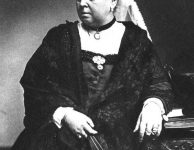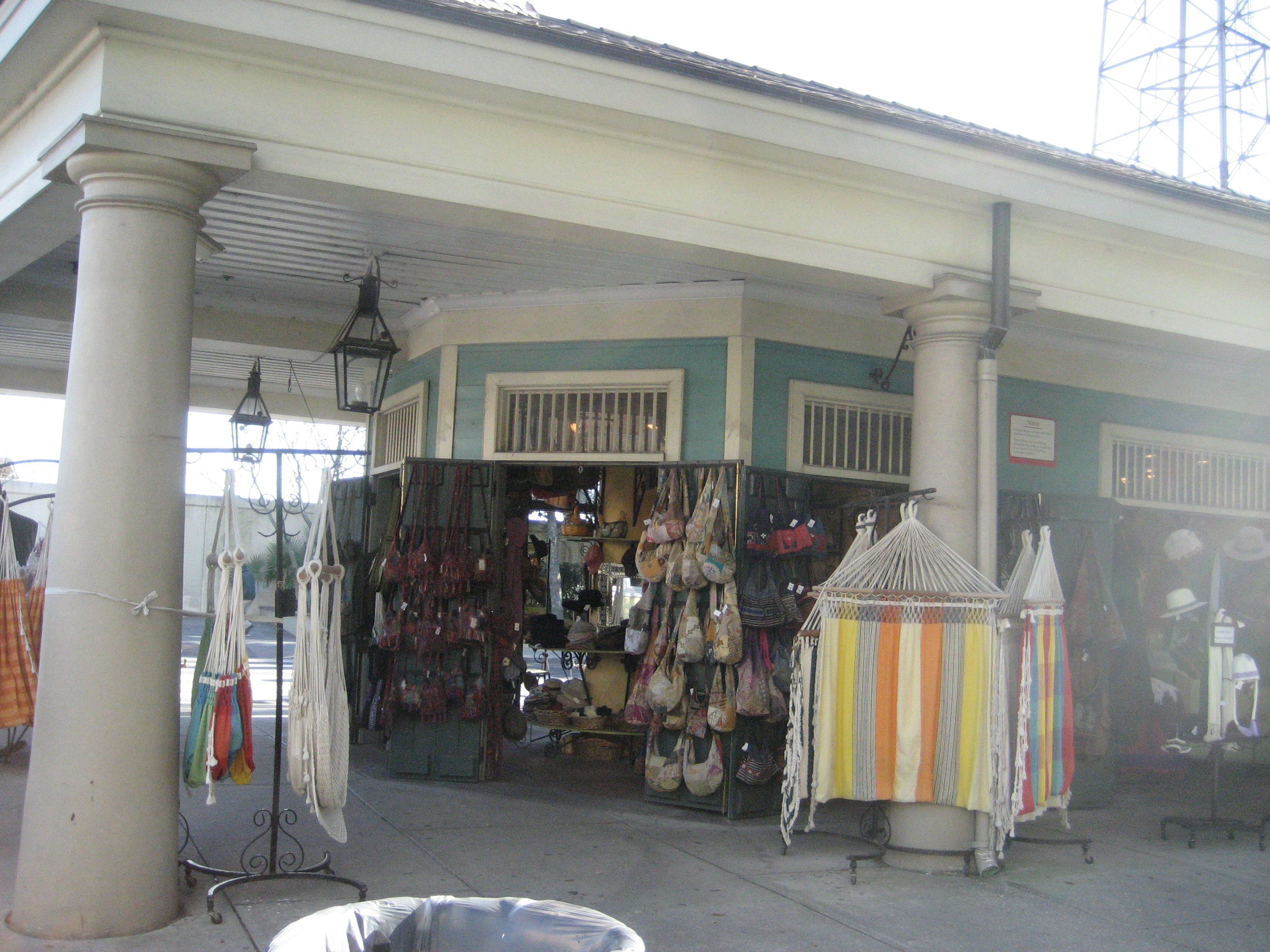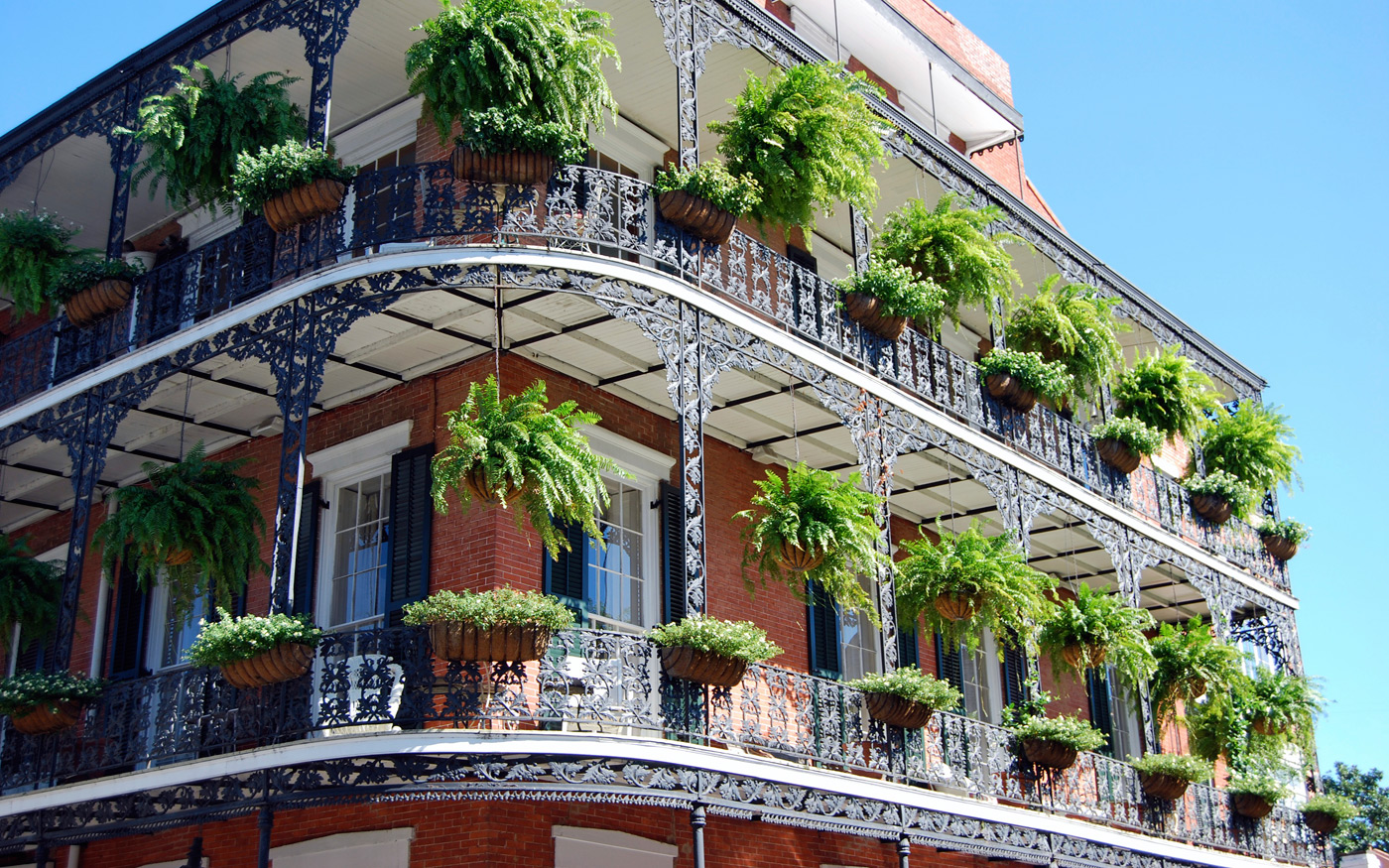The Tiny Waist Leads to the Armless Chair
Mary reporting. In my grandmother’s home, the Victorian gentleman’s chair had graceful mahogany arms on each side, ideal for resting his forearms while reading a book or a newspaper. The smaller lady’s chair had no arms. The wood curving around the chair’s back simply stopped at the velvet upholstered seat.
Such inequality in home furnishings can be blamed on the Victorians’ fascination with a small waist. What a tightly laced corset couldn’t accomplish, a dress that exaggerated the size of the lady’s hips and derrière could. In the 1850s to 1860s, the hoop underskirt, made of wire, produced a bell-shaped skirt that stood away from the hips, making the waist appear small by contrast.
The bell evolved into the ellipitical hoop skirt—the kind Scarlet O’Hara wore. This shaped a dress with greater fullness to the back than the front. By the 1870s, skirt fronts became flatter and fit closer to the body. Dressmakers swept excess fabric to the back of gowns. Yards and yards of it.
To support the heavy fabric in the rear, women began to wear a ungainly undergarment called a bustle. This frame, fastened at the waist, was often made of a series of semi-circular steel wires sewn at intervals into a cloth petticoat. Woven wire resembling a sieve and even matted cornhusks served as bustles, too.
A protrusion of this sort cannot have been flattering on any woman. Surely such attire made it difficult to climb into a carriage or walk through a cluttered parlor without knocking over furniture.
The bustle went out of style briefly in the late 1870s only to resurface some years later in even more exaggerated proportions. By 1882, women’s bustles gave them the shape of hens. The back shelf became so outrageous that male wags of the day pronounced it possible for a lady to carry a tea service atop it.
In The Willing Widow, the independent heroine refuses to wear a bustle. Renee Desselle designs her own clothes and has a modiste make them up for her. Her skirts fit close to the body, front and back. For her opera dress, she instructs the dressmaker: “In the back, across the derrière, a slight drape of fabric. No bustle or train.”
How did a lady wearing a bustle sit down? This video explains why she preferred a chair without arms. http://historicalsewing.com/how-to-sit-victorian-bustle-dress


